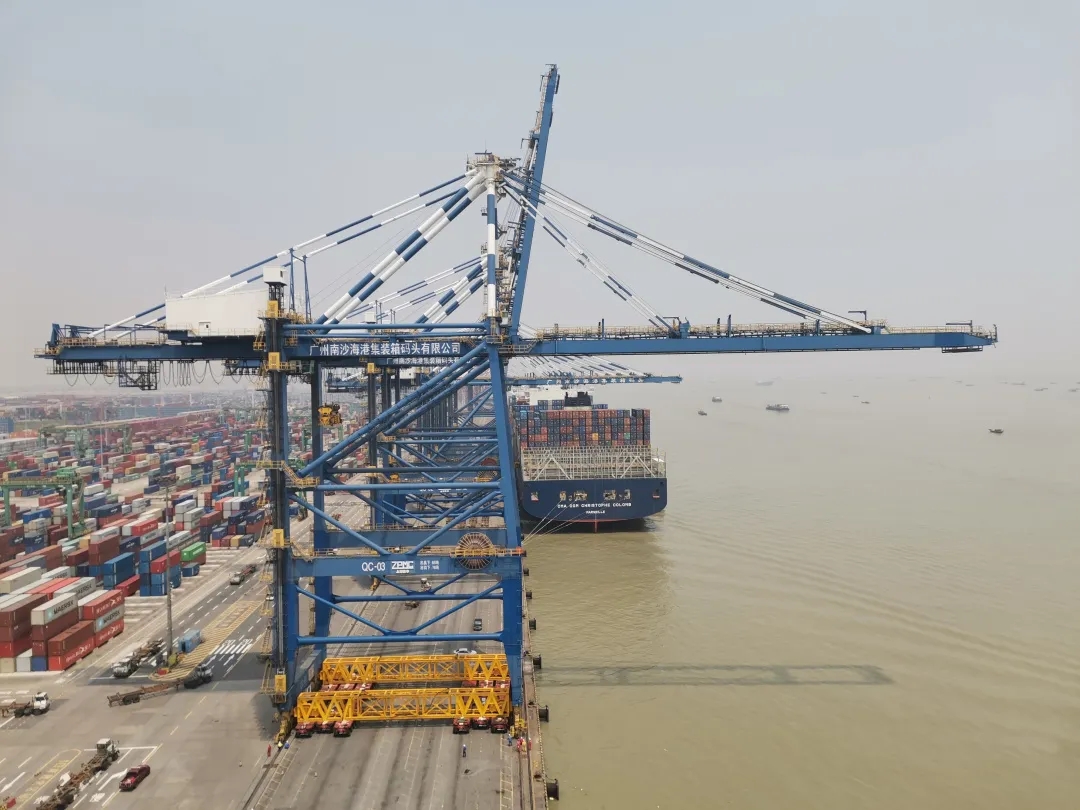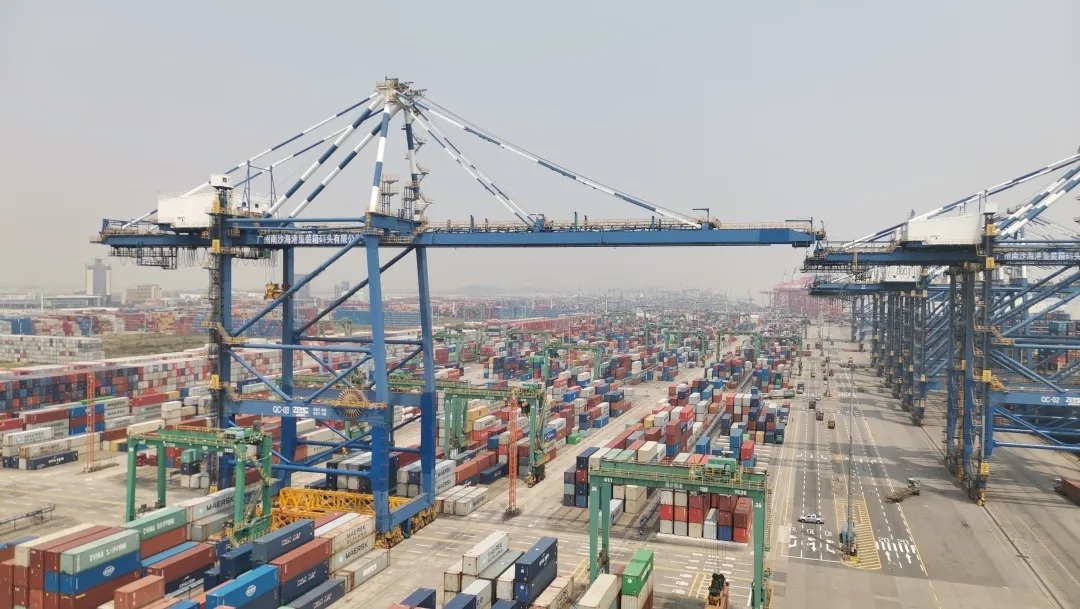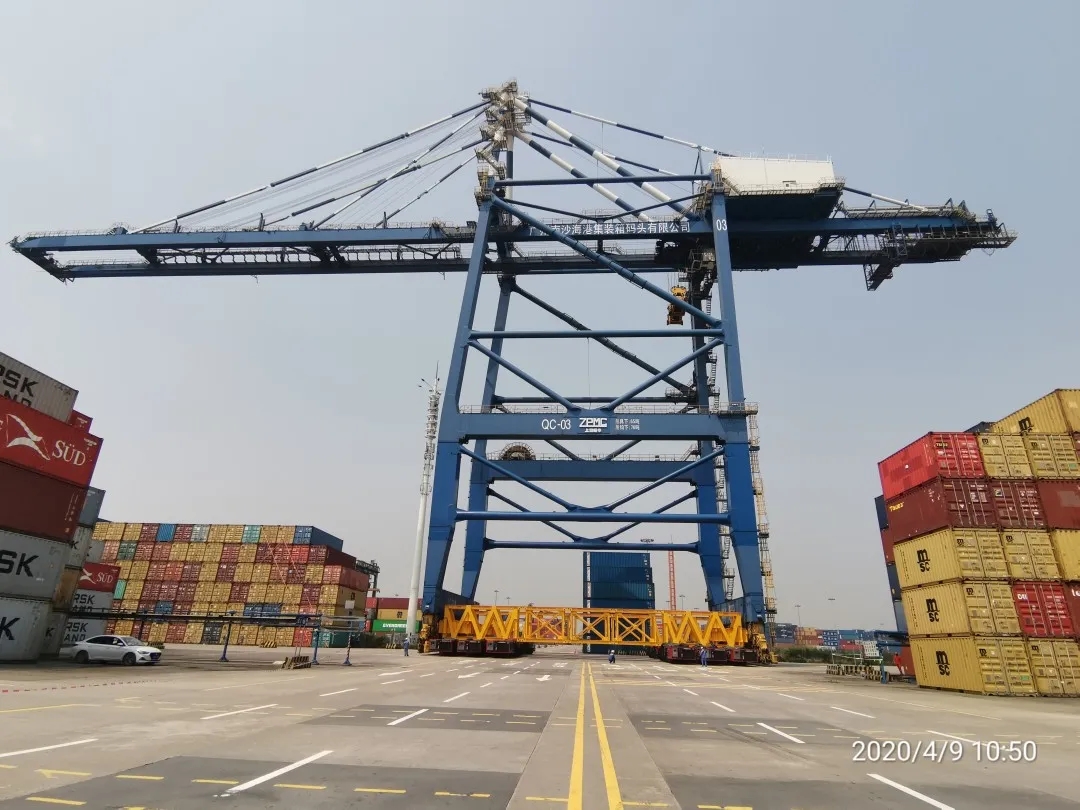4 quay cranes have been relocated by SPMT recently in Guangzhou China.

Why quay cranes need to be moved by SPMT?
Quay crane can run on rails, but sometimes it needs to be relocated to another location which has no rail access, or the moving distance is too far to use sliding rail method.
With the help of SPMT, quay crane can be transported in one piece to another rail track.
What is quay crane?
Quay crane is a kind of port machinery, it is a shore crane specially used for container loading and unloading. Off the shore there are also gantry cranes in the container yards to relocate containers or load them on container trailers. It is also called ship-to-shore container gantry crane.
Normally containers flow in the harbor: ship<->quay crane<->container chassis<->ship to shore container gantry crane<->container yard.
To improve the efficiency of container handling, the quay crane equipped with rail-type traveling mechanism. When the crane is empty load, the traveling speed is faster than that of the tire-type crane (rubber-tired gantry crane). On the other hand, while the quay crane is lifting and transporting containers, it can move farther distance than RTG crane.
So far rail-type quay crane is the most ideal way to handle containers, load and unload railway cargos.
Comparison between quay crane and RTG
Quay crane:
- Higher moving speed
- Specialized for high volume of containers
- More containers can be handled at one time
- Quay crane can move long distance on the rail
- Reliable and easier maintenance
- Maintenance cost is only 50% compare that of the RTG container crane
- Energy consumption for rail-type quay crane is 50% – 60% of tired crane
- Lower noise
- Higher loading and unloading capabilities
- Investment of infrastructure construction is high
- Poor maneuverability
- Self-weight of the quay crane is up to 650 tons, so the pressure to the ground is over 40 tons, which is higher than the standard pressure of 25 tons for most bulk cargo terminals. In that case, the quay crane requires higher demand on ground construction
RTG:
- Widely used mature method at present
- Suitable for container terminals with a smaller height of the water
- Outstanding maneuverability
- Due to the heat-dissipating issue of rubber tire, RTG can not move for a long time and long-distance
- Adapt transitional multi-purpose terminals
- Investment for RTG is higher than that of the quay crane
In this project, three units of ship-to-shore cranes need to be relocated from berth 5 to berth 8, and one quay crane needs to be shifted from berth 8 to berth 5. The weight of each crane is 1,800 tons, and the total travel distance is nearly 1,736 meters, and the traditional sliding method is no longer suitable for this job.

From above photo you may see the advantage of SPMT during relocation of the quay crane. The quay crane is easily to move on the existing rail, and the rail is along the coast of the container terminal. Make use of the SPMTs, we can transport the quay crane off the rail to any location on the container terminal.
In order to ensure the normal operation of the yard, we decided to use self-propelled modular transporter (SPMT) for the relocation of the quay crane and specially developed the lifting tooling.
Due to time is tight, to make sure that the crane can be back into container operation at the fastest speed, the priority task is to optimize the relocation route and to pave pits on the route. Temporarily reinforced the route by sand and steel plates, the steel plates could be paved by forklift to speed up the process.

Even with the heavy rain on the relocation day, the SPMT can still finish the job by its high ingress protection.
This relocation involves multiple tasks such as SPMT, hydraulic jacking, and distribution beams assembly, those are making sure the relocation of 4 quay cranes were relocated successfully.
You may interested in viewing self-propelled modular transporter moves portal crane.


